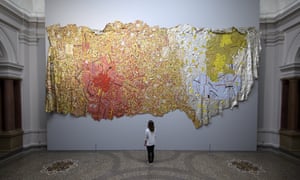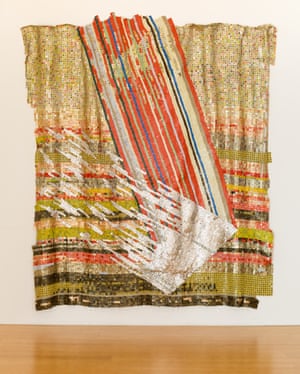It wasn’t normal for someone like me to become an artist. Growing up in rural Ghana, there was nothing like a museum or art gallery, and nobody pursued art as a profession, so I had no role models. When people heard I was going to study art, they wondered what precisely I would do when I finished. But I knew that I would go on to practise as an artist. I knew I was going to enjoy it and be on top of it.

It was in art school in Kumasi that I developed interest in sculpture. It was more free and versatile to me than painting or textiles or ceramics, and almost all the other forms are present within it. At that time there were terribly few books about African art or sculpture, but in the few that I could access, I saw that the artists were more interested in interpreting the human figure than copying it. And they showed very great understanding of the media they worked with, be it clay or wood – they knew how to handle it so that it had integrity.
Later on, at the National Cultural Centre in Kumasi, I was introduced to more African work, and what attracted me were the pictograms I saw printed on fabrics. These pictograms were trying to capture abstract concepts, such as God’s omnipotence. In the Renaissance, abstract concepts such as virtue were given a human form, but these artists were grappling with abstract concepts without reference to the human body.
When I finished art school, the first thing I did was to look for a material with which to continue my exploration. In the market I chanced upon round wooden trays that were used for displaying tomatoes, onions or fish. I thought that would be a very interesting medium, so I collected some of these trays and branded them with pictograms using rods dipped in fire – that was my first attempt at indigenising my aesthetic.

A few years later, I got a job at the University of Nigeria. When I came to Nsukka, where I live and work today, the first material that I worked with was clay, because clay was everywhere – it was the earth on which you walked. I had the idea of exploring what I think is the most classical form that clay can produce – the pot – but I was attracted to broken pots. When pots break they are not gone, they are transformed into a new medium and they become more versatile.
After that, then I went for an artist residence in Cummington, Massachusetts, where I started using a chainsaw as sculpture tool. I saw that it had a very great appetite for tearing wood, which made me think of how the African continent was torn into little countries by European powers. It also allowed me to explore environmental issues: the clearing of forests and the denuding of the earth, and the environmental crisis that grew out of it.
After some time I gravitated towards wood forms that humans had used; the commonest one I could find was a mortar used in pounding. To disused mortars I gave new life by changing the mode of presentation – if it was a long, trough-like mortar that was laid horizontal while in active use, in its old age, when it’s torn and in bits, I would stand it up and thereby give it more presence and grandeur.
I was working with used wooden objects – mortars, doors, windows – when I chanced upon the metal pieces that were to become my mainstay. First I started collecting milk tin lids and turning them into big sheets, about two metres long and one metre wide, which I would shape in various ways.

But I didn’t quite find the freedom in that form until I started working with bottle caps, which were far lighter, and with which I could create bigger and more versatile sheets. I kept discovering new things about the material, and 20 years on it’s still yielding new ideas. I use the bottle cap to create dense forms, loose forms, very transparent forms that you can see through. Painting on them, you can do thick impastos, then smooth washes with acrylic, and then very transparent washes with watercolour – all of these things are possible with bottle caps.
All this time, I’ve been thinking about the history or function of the object, and that affects how I handle it. With the bottle caps, the story I’ve been telling is about transatlantic trade and the goods – including human goods – which were sent from Africa to America to produce rum and other things, which came back to Europe and then finally to Africa. So the drink represented here by bottle caps links all three continents.
Throughout my career, I’ve been using materials that are close to hand. That’s one of the issues I sorted out after art school: you should always work with what’s available. For one, it will reflect your environment, circumstances and history. Also, if an artist uses only very rare materials, it can stifle creativity, because you won’t want to make any mistakes with a precious material. With something that’s so common, however, you can experiment without any hindrance.
The bottle cap hasn’t reached the end of its run yet. I doubt it can have an end, because it keeps coming up with new properties. People can work in painting for a whole career, but this has more versatility than canvas and oil. It could be a medium to occupy a whole lifetime, easily.
El Anatsui’s exhibition Triumphant Scale is at the Kunstmuseum Bern till 1 November 2020
–
Credit: The Guardian



